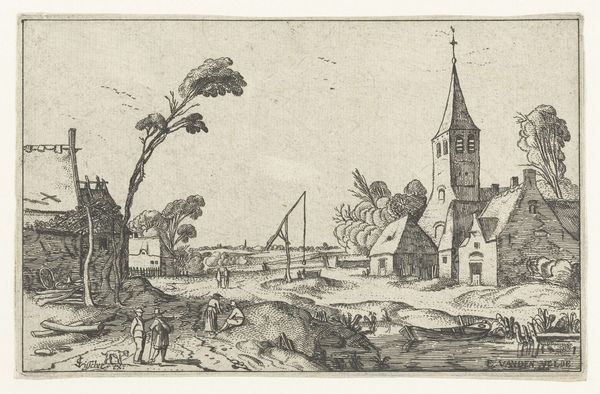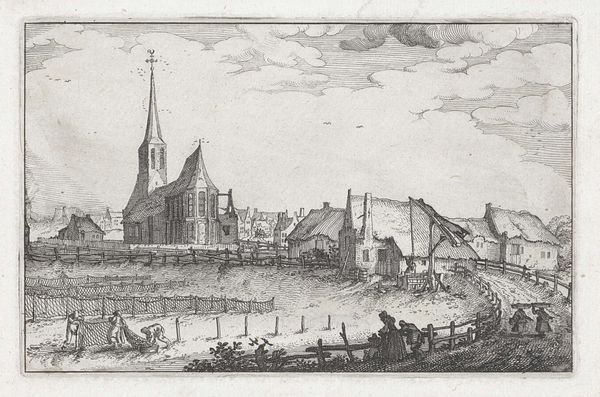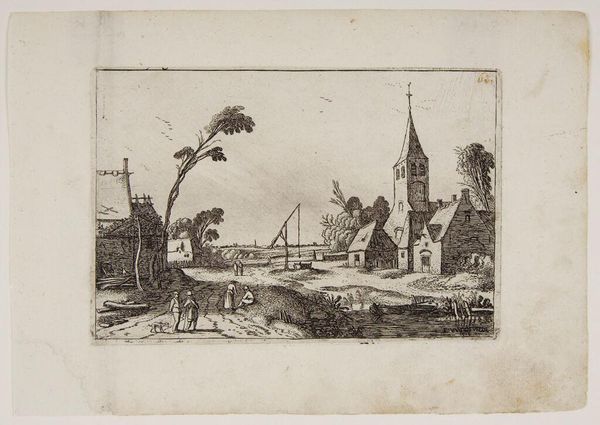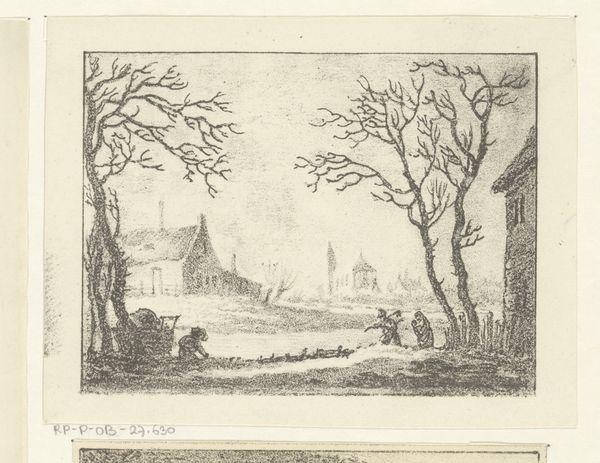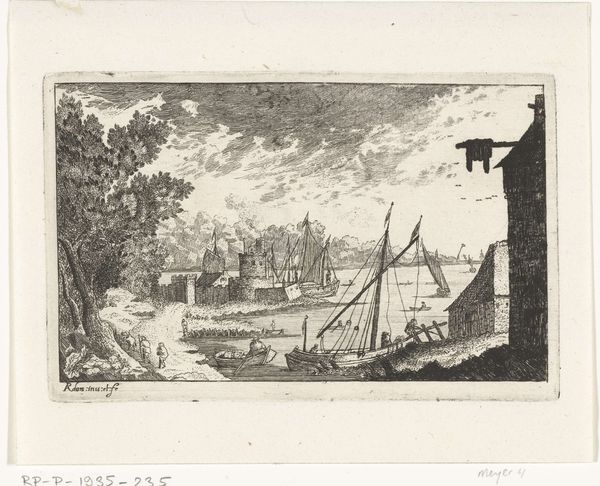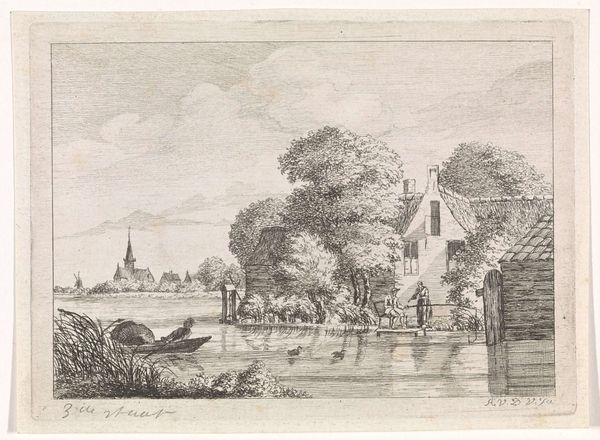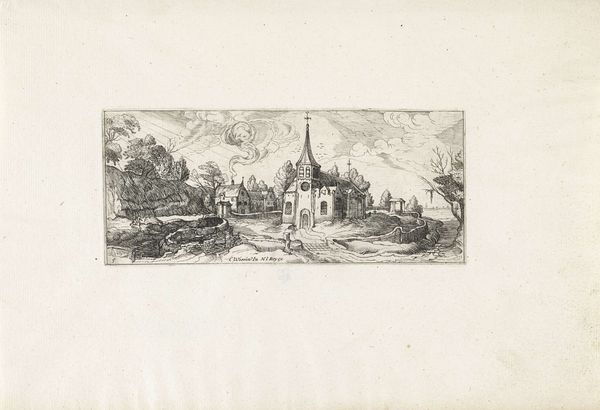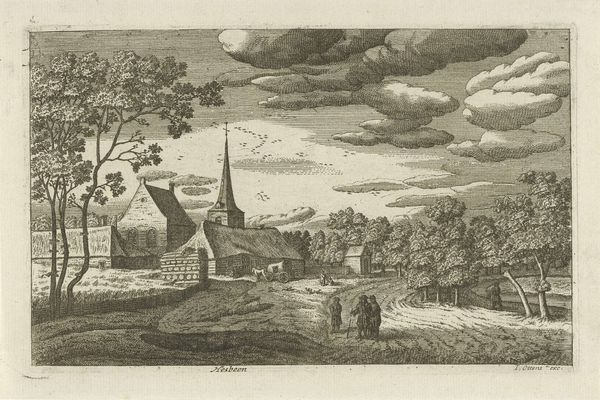
drawing, print, etching
#
drawing
#
pen drawing
#
dutch-golden-age
# print
#
etching
#
landscape
Dimensions: height 114 mm, width 171 mm
Copyright: Rijks Museum: Open Domain
Curator: Here we have Esaias van de Velde’s "Village Scene with Farmhouses, Church and Water Pump," a detailed etching from 1614. It resides here at the Rijksmuseum. Editor: My first impression? It feels like a glimpse into a quieter, simpler time, doesn't it? The intricacy achieved with etching is astounding—each tiny line shaping a whole world. You can almost smell the hay and hear the gentle rustling of leaves in the wind. Curator: Precisely. Velde's masterful manipulation of the etching technique allows us to observe the burgeoning Dutch countryside and its industrious people. We can appreciate the craft involved, as the etching process demanded precise labor. Copperplate engravings such as this became important visual tools, feeding into the Dutch Republic's rising global trade. Editor: Thinking about that, it’s interesting to see how even in what looks like a calm rural scene, there's this undercurrent of social fabric being woven, wouldn't you say? Look at the clothing; note the gathering near the water. One wonders, what are they talking about? Love it! Curator: Indeed. Note the inclusion of the water pump, a fairly new technology at the time that, coupled with the burgeoning church in the background, allude to progress and societal cohesion. Velde demonstrates both awareness and, perhaps, implicit commentary on evolving societal values. Editor: Absolutely. It makes you ponder about the human element amidst daily life; those stories etched—quite literally—into the landscape. Plus, for a village scene, I feel it balances the rustic and the aspirational... that church steeple really piercing the sky. It hints at higher things, metaphorically. Curator: That’s quite astute! Velde captures the burgeoning wealth and social consciousness of the Golden Age through seemingly mundane rural subject matter. We observe societal ideals in the details, such as improved infrastructure and public gatherings in his depiction of this little village community. Editor: You’re right; there's a lot of life crammed in that tiny space, not simply landscape; there's aspiration. And those figures almost feel like us, like ancestors. They look like folks busy navigating their lives centuries before us, seeking connection by that well! So simple but, in reality, really touching. Curator: A superb analysis; through the materials and execution of his prints, Van de Velde documented the evolving social landscape around him. Editor: Well, between Velde's etching work and the Rijksmuseum's exhibit work, history gets a chance to have a voice!
Comments
No comments
Be the first to comment and join the conversation on the ultimate creative platform.
